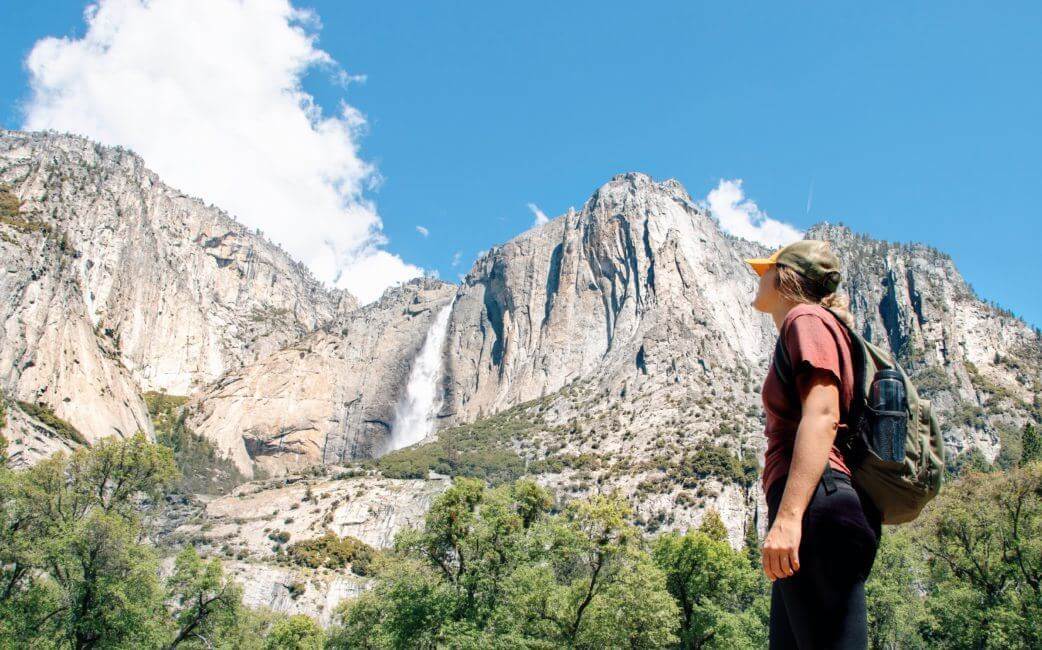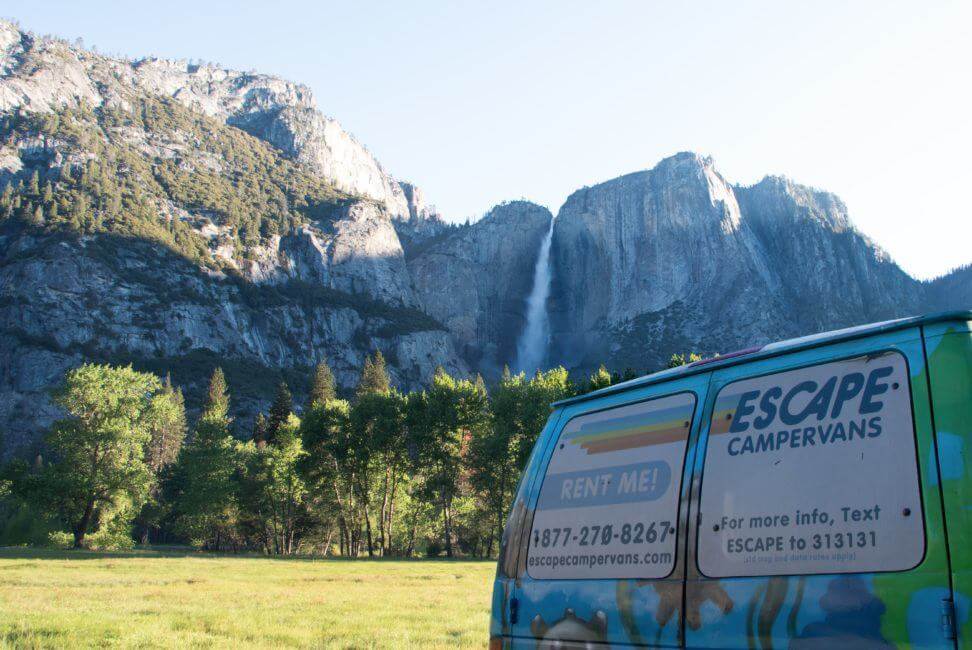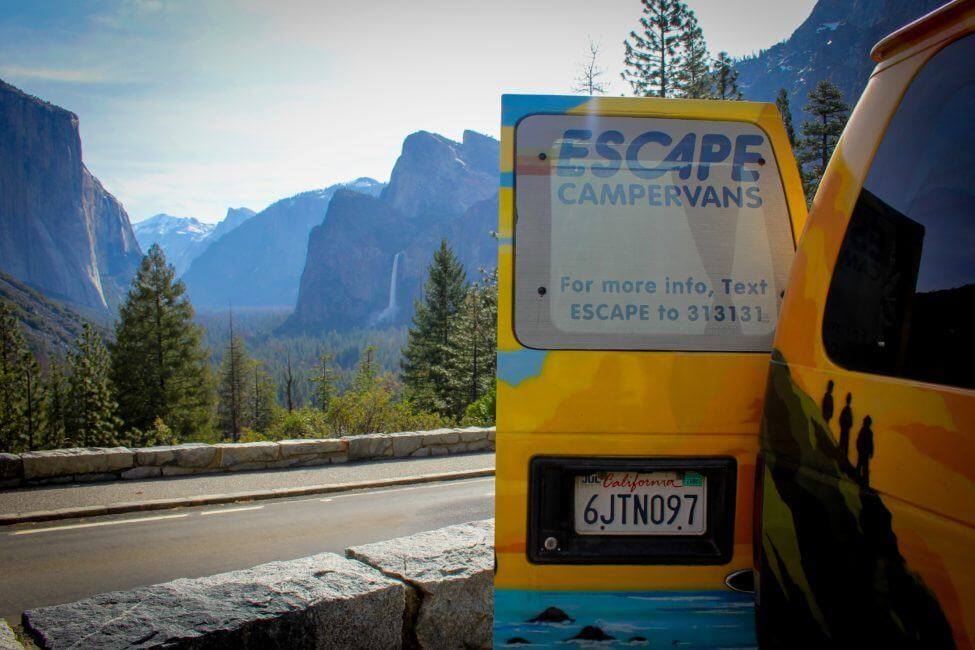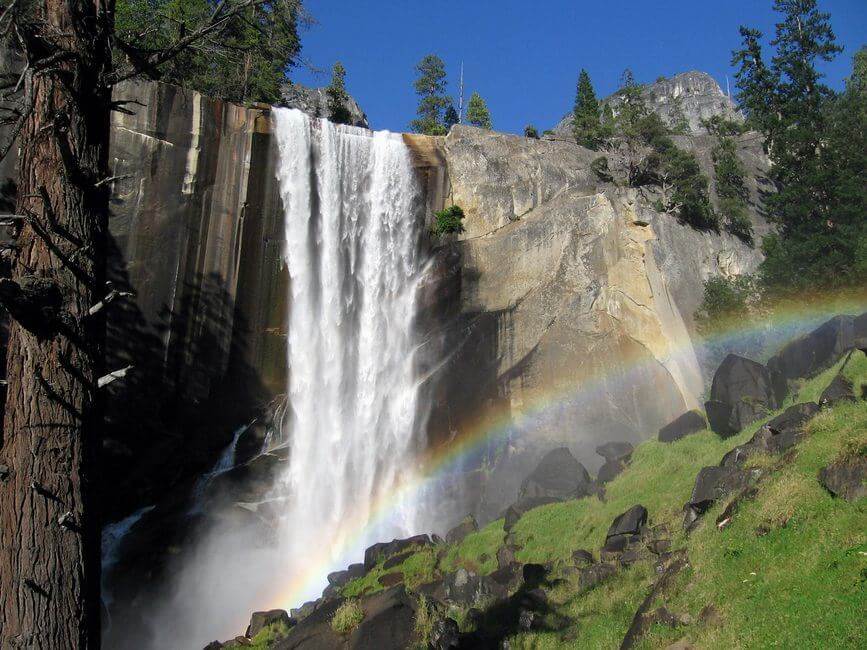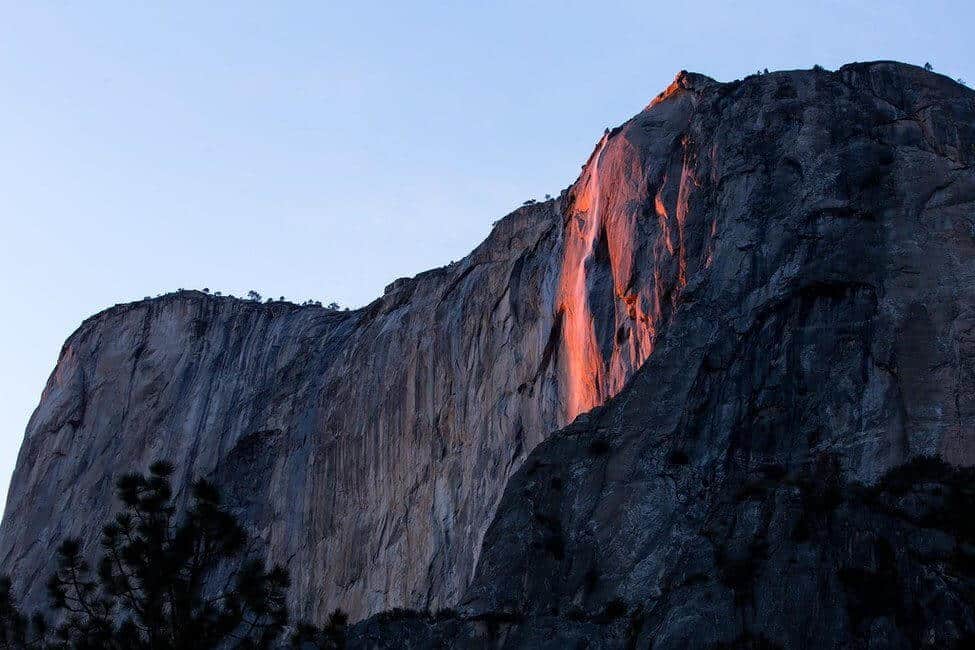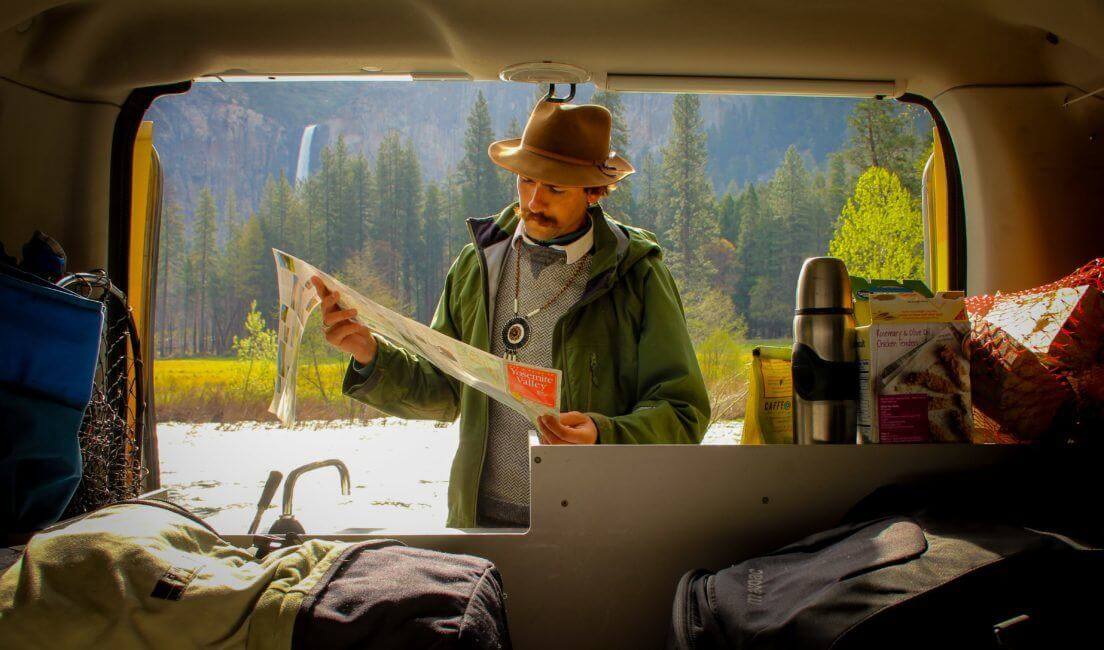The waterfalls in Yosemite National Park are some of the most majestic in the entire country. The sheer walls of towering granite and spectacular cliffs that can be found throughout the park offer awe inspiring backdrops almost everywhere you look. Continue below to learn when the best time to see the waterfalls in Yosemite is and which ones are some of the most popular.
When is the best time to visit Yosemite waterfalls?
Spring! While Yosemite is incredible year-round, if you want to see its beautiful waterfalls at their finest, spring is by far the best time of year to go. In May and June, the waterfalls are at their peak, the wildflowers are blooming, and the summer crowds have not yet arrived (although it does still get quite crowded). In spring, melting snow fills the streams, and in unusually wet years, Yosemite Falls alone can fill the entire valley with its roar!
Yosemite Falls
Height: 2,425 ft
Flow: Approximately November through July, with peak flow in May
Yosemite Falls holds the undisputed title of the tallest waterfall in North America. It’s a challenging hike to the top, but the view from the base is impressive itself and is an easy and scenic 1-mile/1.6-km loop that should be on everyone’s bucket list. It’s actually made up of three separate falls: Upper Yosemite Fall (1,430 feet), the middle cascades (675 feet), and Lower Yosemite Fall (320 feet). You can see Yosemite Falls from numerous places around Yosemite Valley, especially around Yosemite Village and Yosemite Valley Lodge (formerly Yosemite Lodge).
Check out the Yosemite Falls webcam for a current view of the waterfall!
Bridalveil Fall
Height: 620 feet
Flow: All year, with peak flow in May
This is likely the first waterfall you’ll see when entering Yosemite Valley. In spring, it thunders; during the rest of the year, look for its characteristic light, swaying flow. You can see Bridalveil Fall from near the tunnels on the Wawona Road (Highway 41) or Big Oak Flat Road (Highway 120) and from a signed parking lot on your way into Yosemite Valley. You can also walk to the base via a short but steep (up to 24% slope) trail in just a few minutes.
Horsetail Fall
Height: 1,000 feet
Flow: December through April
If you can’t make it to Yosemite in May, February often offers a special treat: the Firefall, which looks like a stream of orange lava flowing down the side of El Capitan. It happens at Horsetail Fall, a waterfall east of Bridalveil and Ribbon falls, whose season typically lasts from winter through early spring.
The Firefall phenomenon, which tends to happen over the course of about three weeks, literally reflects the convergence of clear skies and the right amount of snowmelt. As sunset nears, the mist catches the sun rays and creates a fabulous optical illusion that lasts up to 10 minutes, making for some dazzling pictures (if you can fight off all the photographers and their tripods). To get the best views, park at the El Capitan picnic area (on Northside Drive west of Yosemite Valley Lodge, formerly Yosemite Lodge) or in turnouts just east of the picnic area. You can see the waterfall from the road.
Waterfalls in Yosemite Outside of Peak Season
Some of the waterfalls flow all year, but the flow varies. Yosemite Falls, for example, often slows to a trickle or completely stops running by August and may stay dry until spring (although autumn storms can cause a temporary flow).
March qualifies as winter in the mountains, with storms, but Badger Pass ski area is still open and Yosemite Valley accessible. In April, skiing is done, but Glacier Point Road/Tioga Roads are still closed, and many hiking trails still covered in snow. Waterfalls are there but not huge. May brings big waterfalls and lots of water, and dogwood trees blooming right around Mother’s Day weekend. Glacier Point and Tioga Roads are still usually closed through Memorial Day weekend, but this is highly weather/winter-dependent. Hiking (without good trail finding experience) is still generally limited to the Valley and Hetch Hetchy, as higher elevation trails are still covered in snow.
Experience Yosemite in a Camper Van
Ready to go see some waterfalls? A camper van will allow you to experience Yosmite in all of it’s glory while still having comfort and security (read our Yosemite camper van rental guide for more info). Simply fly into San Francisco, pick your van up from our San Francisco camper van rental site, and follow our San Francisco to Yosemite road trip guide. You can also fly into Los Angeles and pick up your camper van from our Los Angeles depot, just 5 or so hours away from Yosemite.
Feel free to check out our blog for more Yosemite tips and guides like how to find camping in Yosemite without a reservation and six must-do Yosemite hikes.


 Call Us
Call Us

